“Growth hacking” sounds so...sexy, doesn't it? But let's be real for a second. Most of the strategies you find online are either outdated or not tailor-made for the complexities of a SaaS business. I want to cut through all that noise and uncover the nitty-gritty tactics that actually made a difference for businesses like yours. Consider this your guide to finding that perfect balance between creativity and real-world results.
Dropbox: Referral Programs as a Masterstroke
We can't talk growth marketing without addressing the legendary Dropbox referral program. A prime example of leveraging virality and incentivized acquisition, their ingenious concept offered users extra storage space for every successful friend referral. This masterstroke resulted in exponential growth, propelling Dropbox from obscurity to a file-sharing giant virtually overnight.

The Lesson? Think 'Viral Loops' & Incentives
While offering additional storage might not be viable for your SaaS, the takeaway is clear:
- Viral Loops: Build mechanisms into your product/service that naturally encourage users to spread the word, like seamless sharing, in-app referral prompts, or social media integrations.
- Tempting Incentives: The rewards don't have to break the bank. For SaaS, it could be premium feature access, extended trial periods, account credits, or even exclusive content.
Airbnb: Hacking the Power of the Community
From budget-friendly rooms to an early-stage startup, Airbnb has come a long way. An integral part of their meteoric rise was cultivating a robust, engaged community, transforming renters and hosts alike into passionate brand advocates.
Initially, they struck gold by tapping into Craigslist's audience, piggybacking on its existing vacation rental traffic. The brilliant part? They built tools enabling Airbnb listings to be cross-posted on Craigslist seamlessly, attracting both audiences simultaneously.

What To Emulate
- Find Your Tribe: Where does your ideal audience already congregate online? Identify relevant forums, subreddits, or even competitor platforms, not to poach leads, but to genuinely offer value and build relationships.
- The Power of Partnerships: Explore creative collaborations with complementary businesses. An analytics SaaS tool could partner with a marketing agency, resulting in cross-promotion, webinars, or co-branded content, expanding reach exponentially.
Mint: Content that Solves Pain Points
Mint, the personal finance app, took the blogosphere by storm. In its early days, a laser focus on creating incredibly detailed financial advice posts became a powerful lead generation engine. Each article addressed specific pain points like 'how to tackle credit card debt' or 'budgeting for your first mortgage'. Pairing this strategy with meticulous SEO resulted in Mint ranking organically for keywords crucial to its target audience.

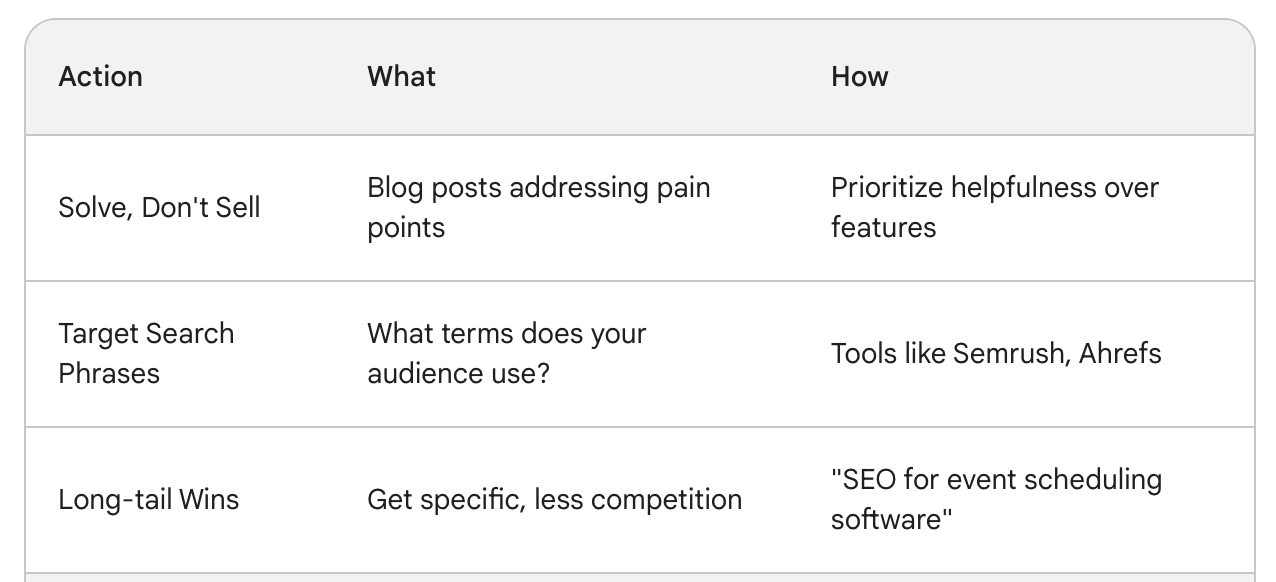
Lessons For Modern Marketers
- Solve, Don't Sell: Prioritize content that empowers and helps your audience before showcasing your product. Establish authority first.
- Keyword Mastery: Don't chase random traffic. Tools like Semrush and Ahrefs pinpoint search terms your audience uses.
- Long-tail Keywords: Broad themes are crowded. Niching down (“budgeting for freelance web designers”) reduces competition and attracts a more qualified audience.
Hotmail: Injecting Growth into Your Signature
It's a tale as old as the internet itself: Hotmail's brilliant inclusion of “P.S. Get your free email at Hotmail” at the bottom of every single sent email. A stroke of genius in its simplicity, this tactic leveraged every user as a miniature brand ambassador, fueling exponential growth in the pre-social media era.
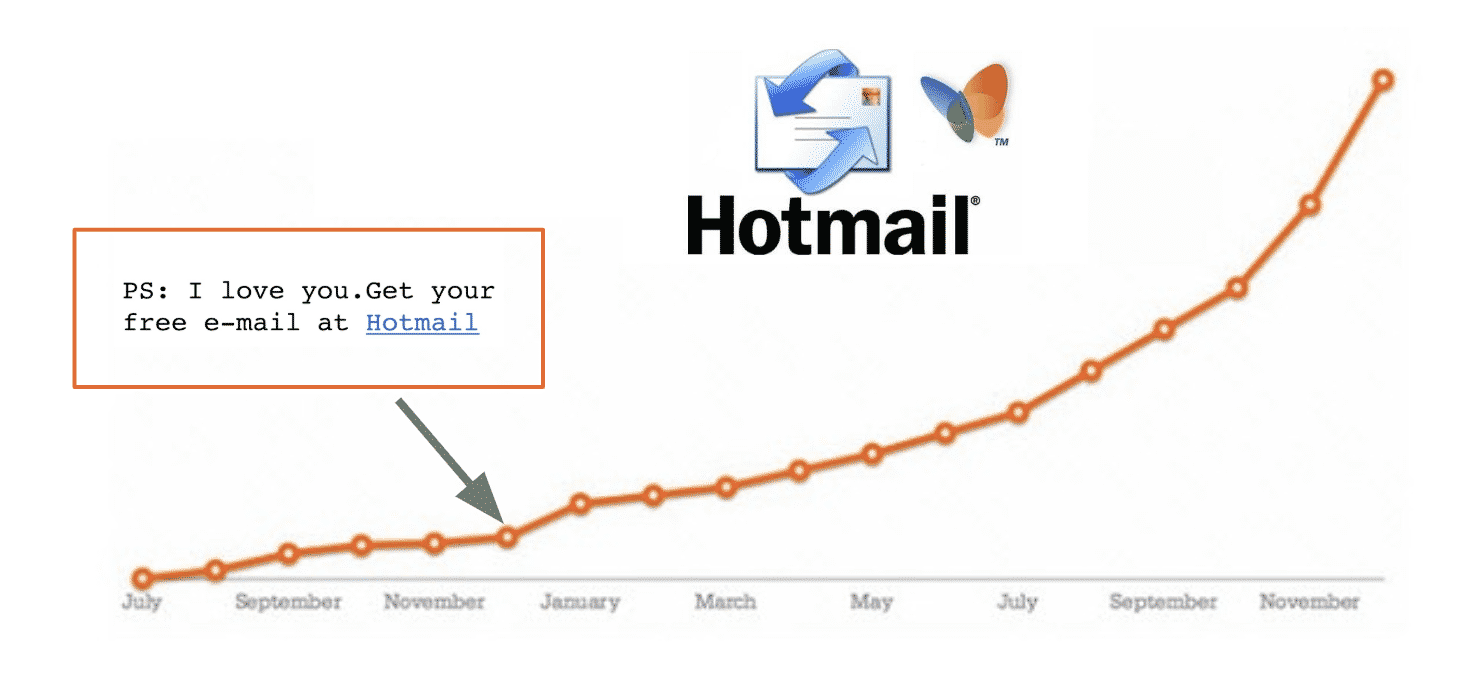
Takeaways for Today
- Leverage Existing Channels: Your email signature remains valuable real estate. Use it not for a dry job title, but as a CTA to try a free tool, or read a relevant blog post.
- The Ripple Effect: Every customer-facing interaction is a growth opportunity. Webinar thank-you emails, onboarding sequences, even invoices can be subtly optimized.
Slack: From Internal Tool to Indispensable Platform
Slack started as an internal communication tool for its parent company. Recognizing its market potential, Slack pivoted towards external users, betting on its superior functionality and seamless user experience to carve out a niche in the crowded team collaboration software space. But their rise wouldn't have been so rapid without these strategic moves:
Freemium as Gateway: An intelligently segmented freemium model allowed potential users to experience Slack's value firsthand, fueling organic adoption within teams. Carefully chosen feature limitations in the free version encouraged upgrades as organizations scaled.
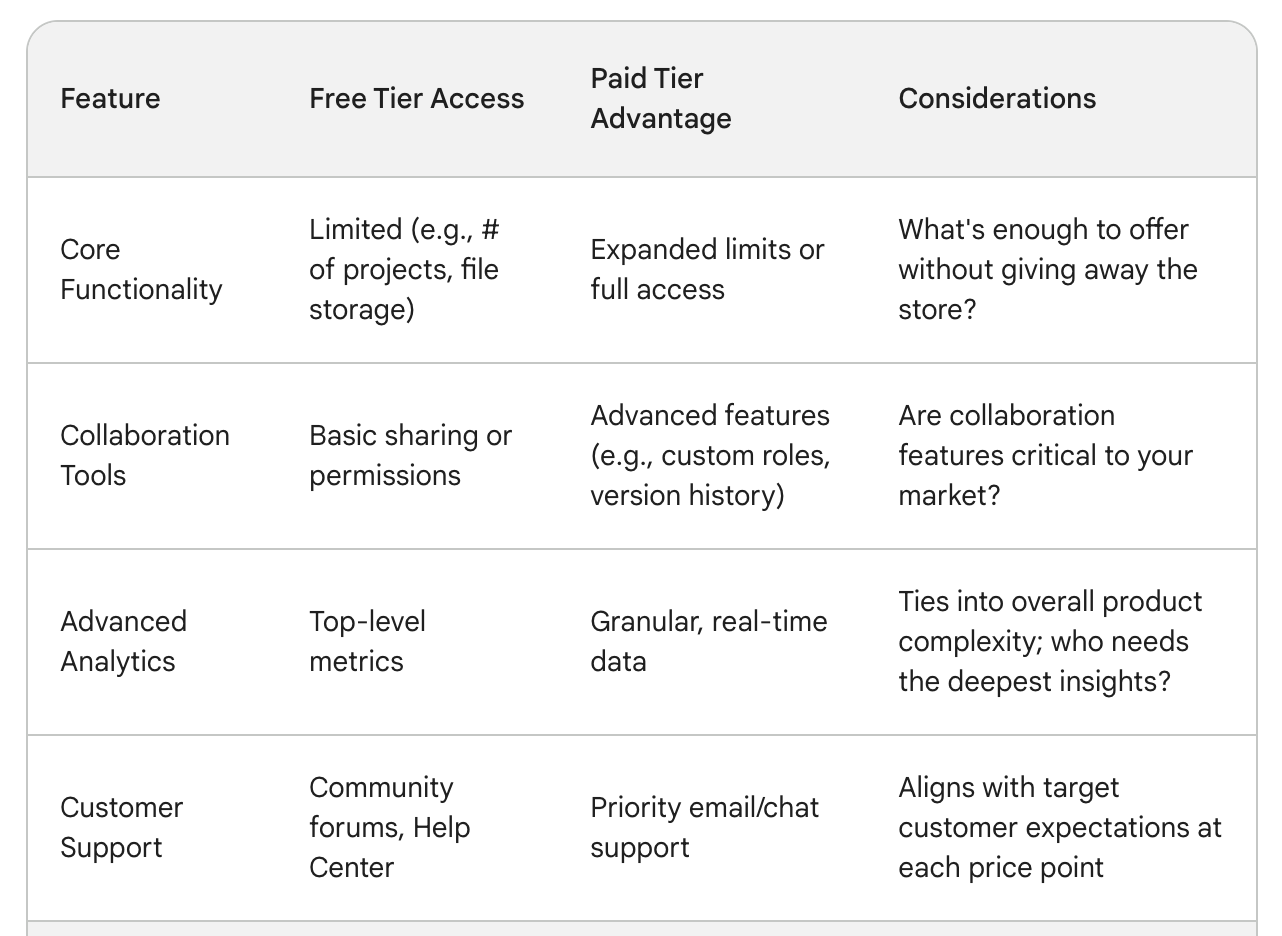
A Focus on Integrations: Slack went beyond being just communication software. Their open API encouraged numerous integrations, transforming it into a work hub, centralizing notifications, task management, and even customer support interactions.
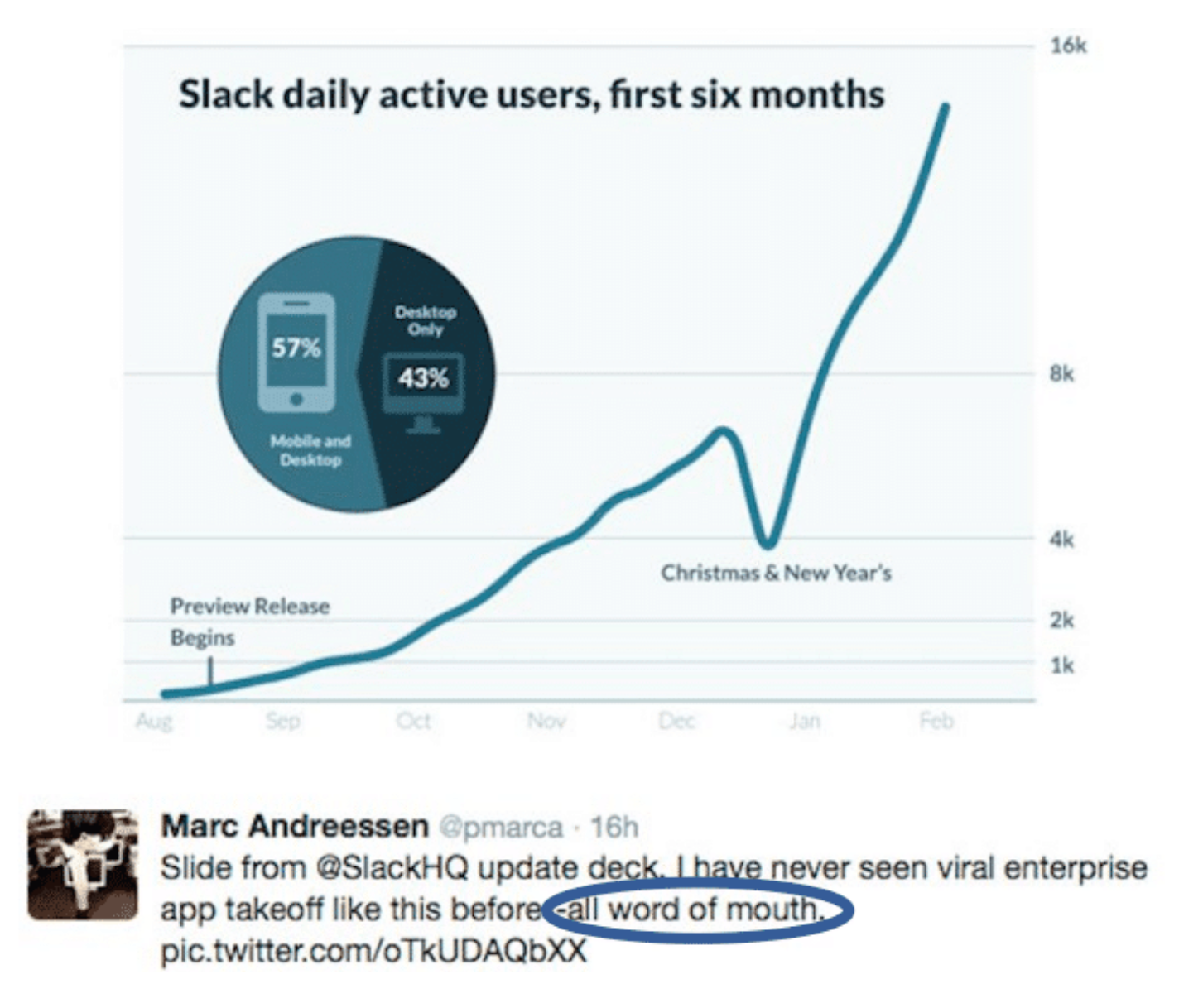
What to Implement From This Example
- Iterate, Don't Hesitate: Even if your SaaS wasn't built for mass adoption, market opportunities may lie hidden. Be willing to refine, even pivot, if the internal use case shows broader promise.
- Partnerships as Multipliers: Which tools naturally complement your SaaS? Building robust integrations creates network effects that make your solution even more appealing.
McDonald's: Growth Hacking Before It Was Trendy
It might seem odd to include McDonald's, but hear me out! Back in the 1950s, Ray Kroc masterminded a growth strategy built on seizing the opportunity presented by America's growing network of highways. Positioning those iconic 'Golden Arches' at every major highway exit transformed road-tripping families into a captive market. It's a lesson in spotting broader trends and aligning your strategy to capitalize on them.

What's This Mean for Modern Marketers?
- The Big Picture: Step back from granular campaign tactics to take in the macro landscape. Are shifts in technology, regulations, or even changing consumer behaviors opening up untapped avenues for growth?
- Distribution Reimagined: McDonald's didn't change its burgers, only where they were offered. How can you adapt your messaging or explore new distribution channels to meet audience expectations (podcasts, niche newsletters, etc.)?
It's Not Just What But How That Matters
We often hyperfocus on finding the next viral hack but overlook the subtler elements that separate brilliant tactics from mediocre ones.
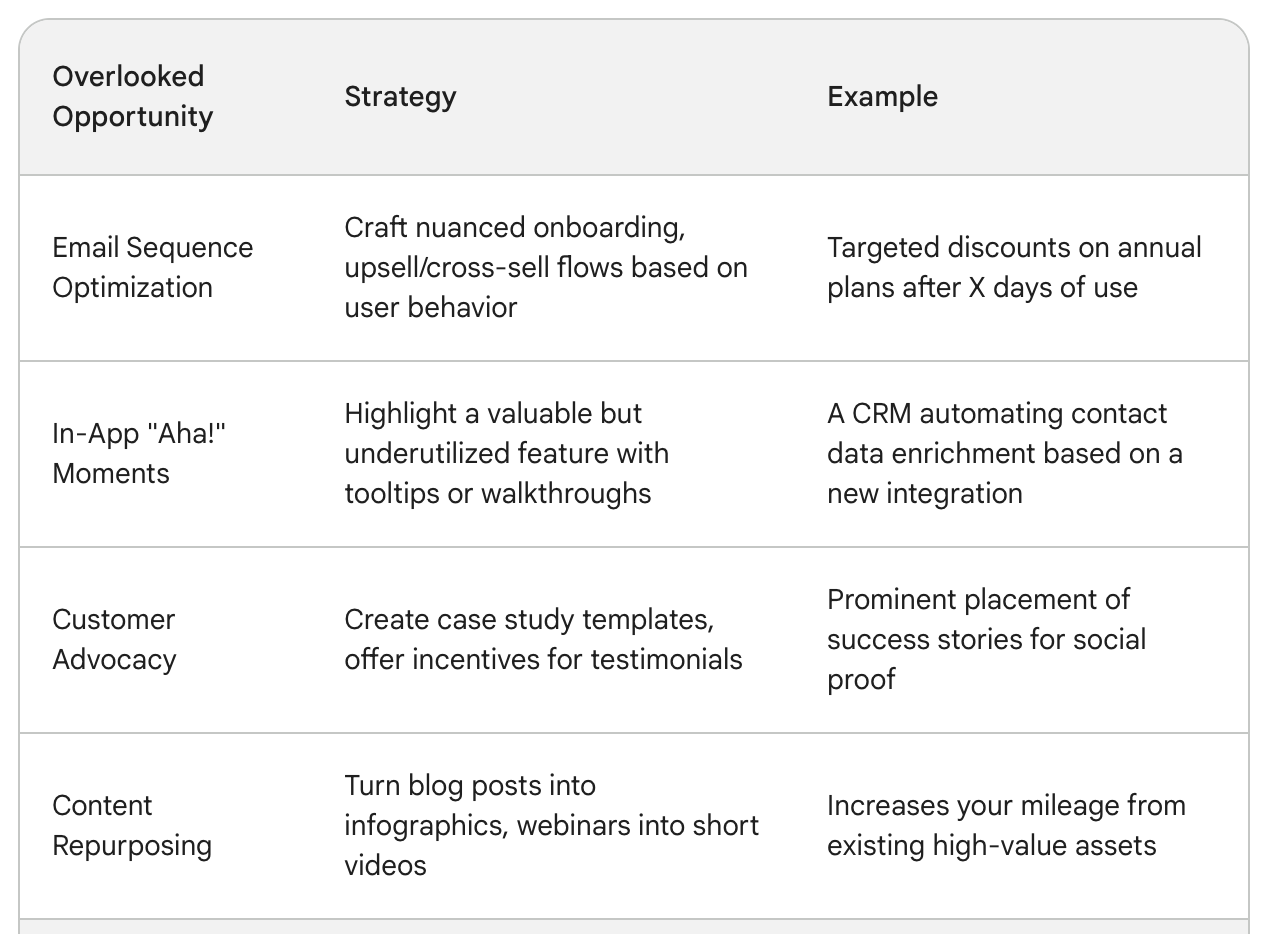
Relentless Experimentation: What worked for Dropbox in 2010 might not cut it today. Growth thrives on a steady cycle of testing, measuring, and refining. Embrace agile sprints instead of years-long 'campaigns'.
The Devil's in the Details: Mint didn't just write blog posts; they optimized for discoverability. Airbnb wouldn't have succeeded by passively infiltrating Craigslist – they built cross-posting tools that made seamless integration possible. It's the nuanced execution that brings ideas to life.
Data-Driven Insights: Marketing can feel like a chaotic whirlwind at times. Gut feelings are useful, but concrete data should back up major strategic shifts. Leverage in-depth product analytics and website usage patterns to ensure every move is driven by measurable intent.
Beyond the Success Stories – A Cautionary Note
Growth marketing comes with an undercurrent of temptation to chase 'silver bullets' or mimic trendy tactics without context. While the stories we admire should serve as inspiration, let's be mindful of these nuances:
Not every strategy is right for your SaaS. Dropbox thrived on rapid consumerization. SaaS targeting complex enterprise problems needs a more bespoke, high-touch approach.
While overnight success sounds wonderful, most of these cases are years in the making. Consistent growth is more vital than chasing viral spikes that leave no lasting impact.
What got Airbnb or Slack off the ground won't sustain them at scale. Be adaptive as your audience, market, and the size of your organization evolve.
My goal wasn't simply to talk about well-known case studies. These narratives hold potent and nuanced lessons applicable to where you are on your growth journey right now. Let them serve as springboards for strategic action, a constant reminder that success is equal parts creativity and data-driven precision.
FAQ
1. My SaaS is still new. Is growth marketing even relevant at this stage?
Absolutely! Growth marketing isn't something you turn on once you're a certain size. The mindset should be embedded from day one. Early-stage tactics will differ—more organic outreach, less paid advertising—but building a growth-oriented process early lays the foundation for sustainable expansion.
2. All these success stories talk about 'going viral'. Isn't that mainly luck?
Virality often feels like magic, but there's almost always a method behind the madness. Dropbox's referral program didn't succeed by accident; it tapped into existing user behavior and incentivized the very action that benefited the platform itself. Analyze 'viral' cases – there's strategy beneath the luck.
3. Where do I even start with finding my own growth levers?
Begin with an honest and detailed assessment of three key areas: 1) Your ideal customer (pain points, motivations beyond your product), 2) Your product's core strengths (not just features, but the transformations it makes possible), and 3) Existing (even small) marketing wins for clues to scale. This analysis guides where to experiment.
4. Content marketing seems promising, but how do I stand out?
The blogosphere is crowded. Generic posts about 'top SaaS trends' vanish into the noise. Instead, become the definitive resource for solving an ultra-specific challenge your target audience faces. This establishes relevance before you even introduce your solution.
5. How much focus should be on paid growth tactics?
Paid acquisition has its place but prioritize sustainable organic growth first. Strong SEO, a high-value referral system, and engaged communities provide compounding ROI over time. Once solid, scale thoughtfully with paid channels, guided by data, not vanity metrics.
6. Do I need an in-house growth marketing team?
This depends on budget, product complexity, and your internal skillset. A seasoned marketer may excel solo in bootstrapped mode. As ambitions expand, building a dedicated growth team may be vital. Don't hesitate to start with skilled part-time or freelance partners, growing the team alongside the business.
7. Is there a 'one-size-fits-all' growth marketing strategy?
Sadly, no. What works for a B2C freemium tool fails for an enterprise-level platform. Effective growth comes from deep understanding of your audience, rigorous experimentation to fine-tune tactics, and adjusting as you scale. No two growth trajectories are identical.
8. How do I measure the success of my growth efforts?
Set crystal-clear KPIs related to business goals, not just marketing activity. Total website visits are less important than qualified lead conversion rate. Measure impact on churn, customer lifetime value, and acquisition cost – metrics that tie directly to revenue health.
9. I'm strapped for time – where's the quickest win?
There is no single "silver bullet" growth tactic. However, optimizing existing touchpoints offers low-hanging fruit. Craft stronger calls-to-action in emails, revamp sign-up flows with A/B testing, and streamline your onboarding to reduce early-stage churn. Small wins build momentum quickly.
10. There's so much info out there, it's overwhelming! How do I know what to trust?
Be wary of anyone promising immediate, dramatic results with minimal effort. True growth is iterative. Look for advice grounded in real-world examples (like you provide in your blog!), backed by data-driven insights. Most importantly, trust your own experimentation over trends.






